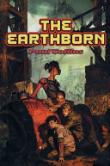 461011084656485855.jpg
461011084656485855.jpg
Cover image courtesy of publisher.
Is part of
Earthborn Wars Trilogy
2003
series - author
novel
(number
1
in series)
Issue Details:
First known date:
2003...
2003
The Earthborn



